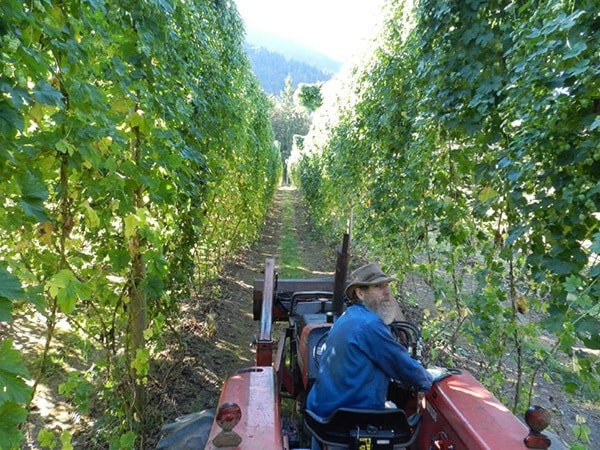It was once a dominant crop in Chilliwack, bringing seasonal work to thousands and creating a lifestyle that seeped through generations.
Today, the hop yards that characterized the local landscape until the late ’90s are only a memory.
But that’s beginning to change. At the top of a sun-soaked hill in a quiet corner of the Columbia Valley, Chris Sartori is nearing the end of his sixth season growing hops.
His property, Sartori Cedar Ranch, has attracted the attention of brewmasters and beer enthusiasts from across the country. They’ve come to one of the few places in Canada where they can find that critical component for their beer – an ingredient that gives it taste and aroma, character and complexity.
Hops have been used in beer for centuries. Their bitterness helps counter the sweetness of the malt, while giving the beverage that unique beer-like bouquet.
For over a century Chilliwack was the centre of hop production in Canada.
At one time, two large farms accounted for nearly 900 acres of production. The fall harvest was a special time for thousands of workers, who toiled through the day, and often slept in the fields at night, until the crop was safely brought in.
Mechanization and modern farming practices changed that, and so too did a changing world market.
Says Chilliwack Museum curator Ron Denman in his book The Chilliwack Story: “In 1997, the John I. Haas Company closed. Fred Haas, the son of the company founder, had died and the company’s assets were sold. An industry that thrived for over a century, and had employed more than 4,000 pickers during the peak production years, ended without fanfare.”
Today, Europe is the dominant hop producer, with several large farms in Oregon and Washington.
The Sartori hop farm, while only 12 acres, is arguably the largest in Canada.
Despite that, it’s still a hands-on, family operation. Each spring the individual hop vines are trained to climb cords that hang from wire cables, supported by wooden poles. As the vines grow, they curl counter-clockwise around the cord, climbing more than six metres in height.
Sartori plants several varieties, which mature at different times.
Harvesting is done by hand. The vines are first cut at their base. Then, from the height of an elevated platform (once used in the Chilliwack hop fields), the vines are cut free and piled on the accompanying wagon below.
From there, the vines are fed into a threshing machine that Sartori had shipped from Germany. The unit, built in the 1970s, was so big it had to be cut in half and welded back together here.
The machine delicately separates the seed cones from the vine. The flowers are then dried and baled for sale.
Sartori’s main customer is Molson Breweries. Indeed, Molson features Chris Sartori in a video on its website that talks about “a hops renaissance in Canada.”
But it’s not just the big breweries that are noticing. With the recent proliferation of smaller, craft breweries, the need to secure a reliable source of hops has grown.
They, too, are seeking out the locally grown hops. Particularly prized are the fresh, or green hops, which are used in what’s called “wet hopped beer.”
One craft brewer – Driftwood Brewery – produces a wet-hopped “Sartori Harvest IPA” that one blogger calls, “easily the most anticipated beer in B.C.”
This year has been a particularly good one for hops. And the pride is evident as Chris watches the vines as they are wrestled onto the wagon, laden with the fat cones so prized by brewmasters.
The hops which were once a key part of Chilliwack’s past, are now a big part of Sartori’s future.
